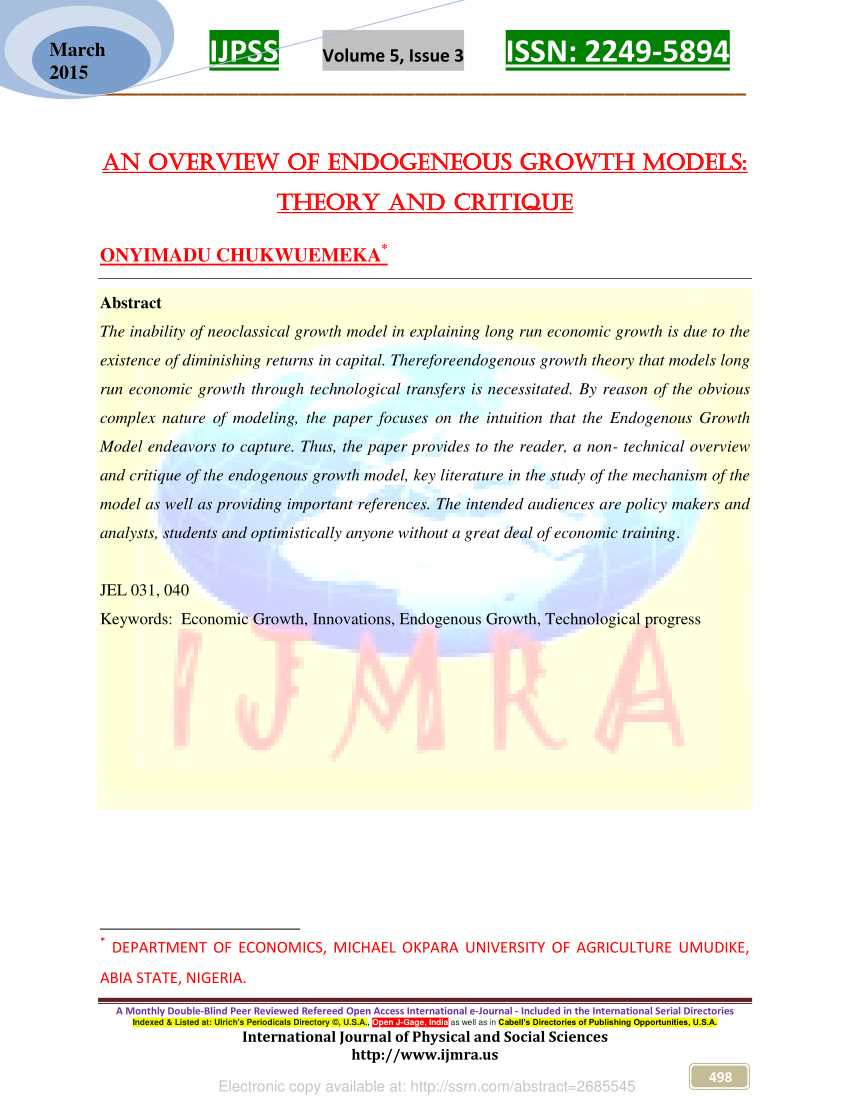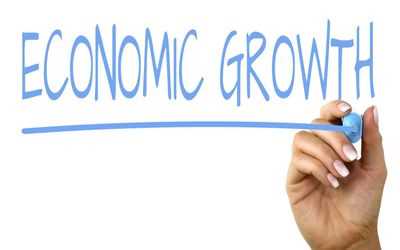Definition and Key Concepts
Endogenous growth theory is an economic theory that focuses on the factors within an economy that contribute to long-term economic growth. Unlike traditional growth theories that attribute economic growth to exogenous factors such as technological advancements or population growth, endogenous growth theory argues that growth is driven by internal factors that can be influenced by government policies and investments.
Key concepts in endogenous growth theory include:
- Human capital: This refers to the knowledge, skills, and abilities of the workforce. Endogenous growth theory emphasizes the importance of investing in education and training to enhance human capital, which in turn drives innovation and productivity.
- Physical capital: This refers to the machinery, equipment, and infrastructure that are used in production. Endogenous growth theory suggests that increasing the stock of physical capital can lead to higher productivity and economic growth.
- Institutions: Institutions, such as property rights, rule of law, and political stability, play a crucial role in fostering economic growth. Endogenous growth theory emphasizes the importance of well-functioning institutions in promoting innovation, entrepreneurship, and investment.
- Externalities: Endogenous growth theory recognizes the existence of positive externalities, which occur when the actions of one economic agent benefit others. For example, knowledge spillovers from research and development activities can benefit other firms and industries, leading to overall economic growth.
Endogenous Growth Theory: Historical Background
The historical background of endogenous growth theory can be traced back to the late 1980s and early 1990s. It emerged as a response to the limitations of the neoclassical growth theory, which assumed that technological progress and economic growth were exogenous factors that could not be influenced by policy or other endogenous factors.
Endogenous growth theory challenged this assumption by arguing that technological progress and economic growth are endogenous, meaning they can be influenced by policy, human capital, innovation, and other internal factors within the economy.
One of the key contributors to the development of endogenous growth theory was Paul Romer, who introduced the concept of “technological change as a result of intentional human activity” in his seminal paper “Endogenous Technological Change” published in 1990.
Romer argued that technological progress is not a random or exogenous process, but rather a result of deliberate actions taken by individuals and firms to improve productivity and create new knowledge. He emphasized the role of research and development, education, and innovation in driving economic growth.
Another influential figure in the development of endogenous growth theory was Robert Lucas, who introduced the concept of “human capital” in his paper “On the Mechanics of Economic Development” published in 1988. Lucas argued that investment in education and training is a key driver of economic growth, as it enhances the productivity and skills of the workforce.
| Key Figures | Key Contributions |
|---|---|
| Paul Romer | Introduced the concept of “technological change as a result of intentional human activity” |
| Robert Lucas | Introduced the concept of “human capital” and emphasized the role of education and training in driving economic growth |
Origins and Development

The origins of endogenous growth theory can be traced back to the 1980s, when economists began to question the assumptions of the neoclassical growth theory. The neoclassical growth theory, which dominated economic thinking at the time, assumed that technological progress was exogenous and that it could be modeled as a residual factor in the production function.
However, economists such as Paul Romer and Robert Lucas argued that technological progress is not exogenous, but rather endogenous, meaning that it is determined by factors within the economic system. They believed that technological progress is driven by factors such as research and development, human capital accumulation, and knowledge spillovers.
This new perspective on technological progress led to the development of endogenous growth theory. The main idea behind endogenous growth theory is that economic growth is not solely determined by exogenous factors such as capital accumulation and population growth, but also by endogenous factors such as innovation, entrepreneurship, and knowledge accumulation.
Endogenous growth theory emphasizes the role of human capital and knowledge in driving economic growth. According to this theory, investments in education, training, and research and development can lead to technological progress, which in turn leads to higher productivity and economic growth.
One of the key insights of endogenous growth theory is that technological progress is not subject to diminishing returns. In other words, as more resources are devoted to research and development, the returns to these investments do not decline. This is in contrast to the neoclassical growth theory, which assumes diminishing returns to capital accumulation.
However, endogenous growth theory is not without its criticisms. Some economists argue that it is difficult to measure and quantify the factors that drive technological progress. Others argue that the theory does not adequately explain the differences in growth rates across countries. Despite these criticisms, endogenous growth theory has revolutionized the way economists think about economic growth and has provided valuable insights into the drivers of long-term prosperity.
Endogenous Growth Theory: Criticisms

One of the main criticisms of endogenous growth theory is its assumption of constant returns to scale. This assumption implies that an increase in inputs will always lead to a proportional increase in output. However, in reality, there are diminishing returns to scale, meaning that as more resources are allocated to production, the marginal productivity of those resources decreases. Critics argue that this assumption oversimplifies the complexity of the production process and may lead to inaccurate predictions.
Additionally, endogenous growth theory has been criticized for its focus on long-run growth and neglect of short-run fluctuations. The theory primarily examines the determinants of sustained economic growth over time but pays less attention to short-term fluctuations in output and employment. Critics argue that a comprehensive theory of economic growth should also account for business cycles and the impact of economic shocks on growth.

Emily Bibb simplifies finance through bestselling books and articles, bridging complex concepts for everyday understanding. Engaging audiences via social media, she shares insights for financial success. Active in seminars and philanthropy, Bibb aims to create a more financially informed society, driven by her passion for empowering others.
